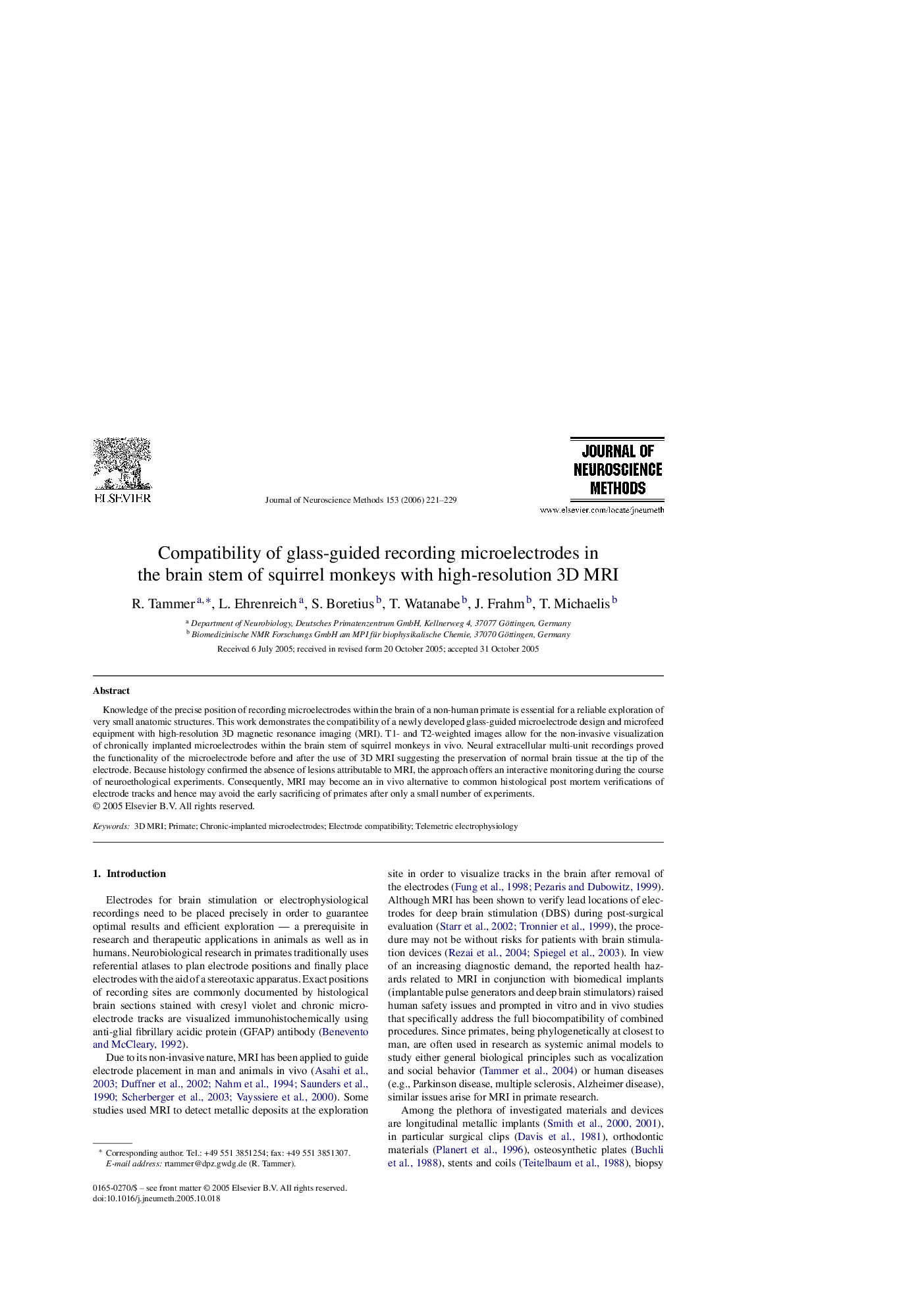| Article ID | Journal | Published Year | Pages | File Type |
|---|---|---|---|---|
| 4336914 | Journal of Neuroscience Methods | 2006 | 9 Pages |
Knowledge of the precise position of recording microelectrodes within the brain of a non-human primate is essential for a reliable exploration of very small anatomic structures. This work demonstrates the compatibility of a newly developed glass-guided microelectrode design and microfeed equipment with high-resolution 3D magnetic resonance imaging (MRI). T1- and T2-weighted images allow for the non-invasive visualization of chronically implanted microelectrodes within the brain stem of squirrel monkeys in vivo. Neural extracellular multi-unit recordings proved the functionality of the microelectrode before and after the use of 3D MRI suggesting the preservation of normal brain tissue at the tip of the electrode. Because histology confirmed the absence of lesions attributable to MRI, the approach offers an interactive monitoring during the course of neuroethological experiments. Consequently, MRI may become an in vivo alternative to common histological post mortem verifications of electrode tracks and hence may avoid the early sacrificing of primates after only a small number of experiments.
